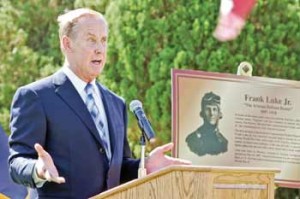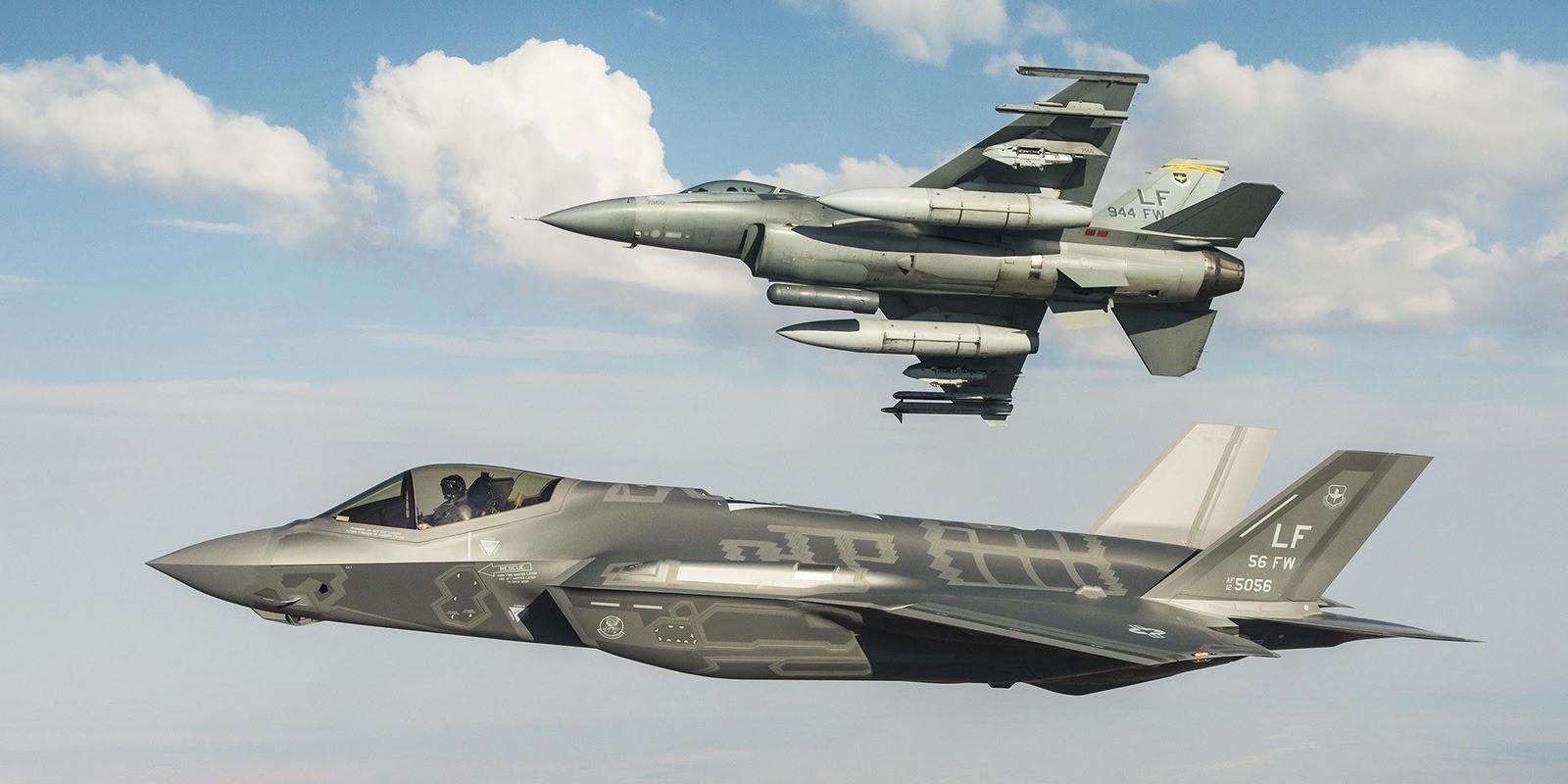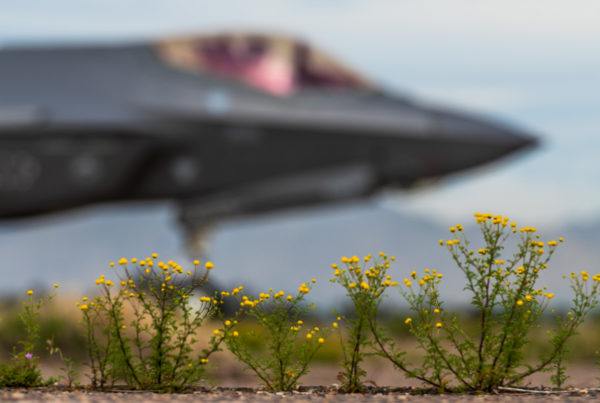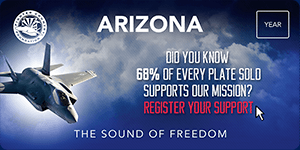
DON LUKE, NEPHEW of Lt. Frank Luke Jr., speaks to guests at a naming ceremony at the Wigwam resort in Litchfield Park Wednesday. One of the resort’s golf course holes was named after the World War I fighter ace. View photo by Michael Clawson
As Wigwam resort owners kicked around the idea of naming golf course holes after patriotic Arizonans, one name quickly separated itself from the rest: Lt. Frank Luke Jr.
“This was a natural,” Wigwam’s most recognizable owner, Jerry Colangelo, told the View Wednesday. “We’re honoring people who’re deserving, and Frank Luke is at the top of the list.”
“Who would be at the first tee? I can’t think of anyone else but Frank Luke,” the deceased airman’s nephew, Don Luke, told the View. “It is a perfect fit.”
What made the Wednesday afternoon ceremony perfect was the fact it began with the Color Guard from Luke Air Force Base, which was named after Frank Luke Jr., the first U.S. aviator to be awarded a Medal of Honor.
“It is a privilege to honor a man who made the supreme sacrifice for this country,” Colangelo told the View. “And having his nephew here to speak to it was terrific.”
$8 million and counting
Wednesday’s event at the Wigwam was just another step by its current owners, JDM Partners, in renovating the 82-year-old resort while at the same time restoring its history.
JDM Partners – Colangelo, David Eaton and Mel Shultz – and other financial backers have invested more than $8 million in the Litchfield Park resort as part of its renovation since taking over the property in December 2009.
A few months ago, the resort renamed two of its courses. The Blue Course became the Patriot Course and the Red Course was renamed the Heritage Course. The Gold Course retained its name.
Wednesday’s dedication ceremony was the first of many to come for both the Patriot and Heritage courses, said Tom O’Malley, general counsel and director of operations for JDM Partners.
“[The Patriot] will be dedicated to the servicemen, policemen and firefighters,” O’Malley said. “It’s great to start with Frank Luke.
“Eventually, we’ll start naming each hole on the Heritage Course after a piece of Arizona history,” he said.
The goal on both courses is not to name every hole as soon as possible, O’Malley said, but to save them for special occasions and ceremonies.
“It’s our version of the Hall of Fame,” he said.
A plaque displaying Frank Luke Jr.’s name, picture and some biographical information was placed by Patriot Course’s No. 1 tee box.
“Patriotism has always been a big part of what I believe in,” Colangelo said. “When you look at the history of Luke Air Force Base and [Frank Luke Jr.’s] history, it is unbelievable. When I look to the sky now and see a balloon, I’ll look at it with different eyes.”
Balloon buster
Frank Luke Jr. was born in Phoenix and became immortalized for his role in basically inventing a way to knock down German observation balloons during World War I.
The balloons “were the eyes of the enemy,” Don Luke told the crowd Wednesday. The men stationed in the balloons would be able to direct their forces exactly where to strike.
While stationed in France, Don Luke’s uncle met with the “doughboys” on the ground, which is when “he learned the fear they had in the trenches for those balloons.”
“He took it as a personal challenge to protect those soldiers,” Don Luke, an Arizona native who made his wealth by running car dealerships, told the View.
Attacking the balloons was considered suicidal, Don Luke said.
“They had four or five aircraft above them and were defended below by machine guns,” he said.
Plus, it took three to four fly-bys to get enough holes in the balloons to make them burst, he said.
“Everyone knows you’re coming,” Don Luke said. “So you’re flying through a wall of lead. He was absolutely fearless.”
Frank Luke Jr. decided to attack at dusk, when most planes were down and machine gun fire was less accurate, his nephew said. Frank Luke’s nighttime missions made history: They were the first evening aerial assaults and the first night landings in U.S. military history, his uncle said.
Frank Luke Jr., then 21, recorded his first balloon victory on Sept. 12, 1918. In the span of two weeks, he went on to knock down 13 German balloons and five aircraft.
There were three air squadrons in France at the time, comprising about 60 pilots, all with the task of blinding the Germans, Don Luke said.
Over a one-week period, 80 percent of the balloons knocked out of the sky where destroyed by one pilot, Lt. Frank Luke Jr., he said.
On Sept. 29, 1918, after knocking down three balloons, Luke crash landed in a small French village. He was killed by enemy fire after the crash.
LAFB Community Initiative Team Director Rusty Mitchell told of a recent encounter by a Luke Air Force Base member with a villager near the site of the crash. Frank Luke Jr.’s story is passed down from generation to generation in France so it will never die, Mitchell said.
“The villager thanked [the LAFB member] for what Luke did for France and the free world,” Mitchell said. “His legacy will continue to live as long as brave men and women take to the sky to defend this country.”
His legacy will also live on now, too, whenever people take to the Patriot Course to play golf at the Wigwam.
“It’s real nice they took the time to honor him,” Don Luke told the View. “He was a unique individual and he did some incredible things in his short life.”
By Rich Ott, assistant editor at the West Valley View
Post updated 6 Feb 2020








